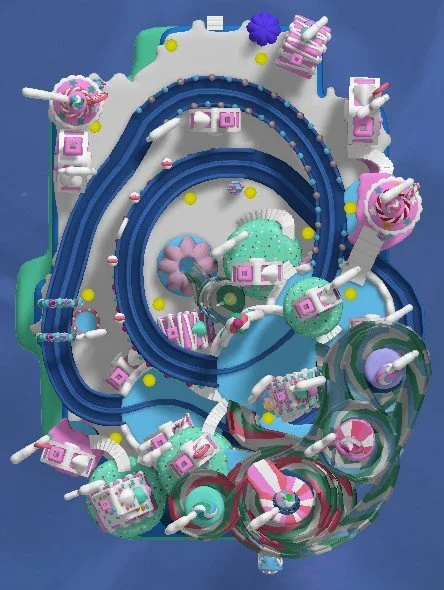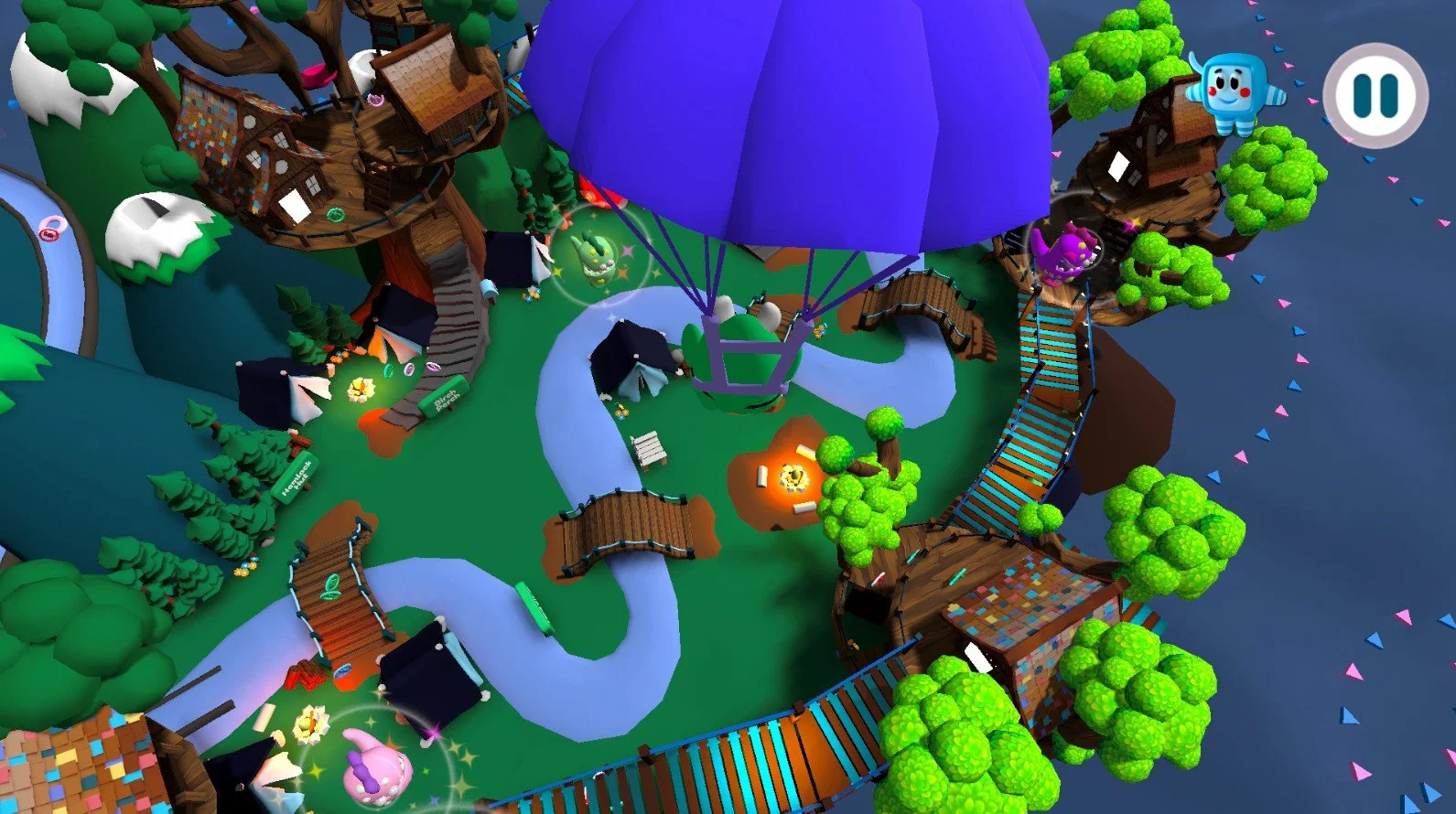Villages: Candy Land
While at LuvBug Learning, I also contributed to a captivating collection of games known as Villages. Across the many games included in this collection, Candy Land stands out. This village includes vibrant characters and exciting activities. Players are challenged to reclaim the village by defeating invading enemies before venturing into an enchanting exploration. By hugging in-game friends and then answering prompts on social-emotional learning, players can enter a unique and exhilarating "extravaganza mode" and engage in thrilling rainbow-tunnel battles. As players roam the village, they have access to various modes of transportation, including trains, boats, and planes, adding depth and excitement to their adventurous journey.
Company: LuvBug Learning
Engine: Unity, C#
Three-person development team
Shipped - Download app: App Store or Google Play Store
Roles and Responsibilities
Level Design
Built Candy Land environment in Unity with custom asset placement and terrain design.
Designed multi-modal player paths for walking, flying, boat, and train gameplay.
Used greyboxing and iteration to refine flow, pacing, and environmental storytelling.
Gameplay Systems
Coded all core mechanics in C#, including collectibles, transitions, and enemy interactions.
Created finite state machines for seamless transitions between gameplay modes.
Developed dynamic triggers and scripted events tied to player progression.
Camera & Presentation
Built custom camera systems with Cinemachine for each gameplay mode.
Scripted real-time camera transitions to support cinematic storytelling and gameplay clarity.
UI, VFX & Audio
Implemented all UI elements, visual effects, and audio triggers.
Synced feedback systems to enhance player responsiveness and immersion.
Optimization
Structured scenes for modularity and performance.
Optimized assets, lighting, and systems for runtime efficiency and scalability.
Parti Diagram of Main Structures
Final Art Filled Top Down View
Level Design Process
Greyboxing & Structural Planning
Began each village by greyboxing major terrain, traversal paths, and activity zones to define spatial flow and player routes.
Focused early iterations on scale, navigation clarity, and pacing—ensuring each village felt distinct but cohesive within the larger world.
Used elevation, sightlines, and movement metrics to shape exploration rhythm and transition points between gameplay states (e.g., on foot → boat → race).
Theme Integration & World Identity
Designed each village around a strong visual and mechanical theme (e.g., candy forests, cookie docks, jellybean tracks).
Embedded core interactables—like collectibles, NPCs, and vehicles—into the level layout to reinforce the theme through gameplay.
Built levels as “activity hubs,” with clear focal points and spatial progression that encouraged exploration and discovery.
Gameplay Pathing & Traversal Flow
Designed movement paths for multiple traversal methods: walking, boating, and racing.
Tuned terrain, track shapes, and boat paths to maintain smooth transitions and avoid backtracking or dead ends.
Created guiding shapes and terrain silhouettes to subtly lead players without heavy-handed UI markers.
Activity & Collectible Placement
Placed jellybeans and other collectibles along natural movement arcs, rewarding curiosity and optimal pathing.
Positioned tutorial nodes and interactive zones in visually distinct areas to draw attention organically.
Designed race and boating paths with alternating wide-open curves and tighter turns to balance accessibility with challenge.
Cinemachine Integration & Spatial Choreography
Used Cinemachine to choreograph smooth camera transitions between gameplay states and key village moments.
Designed environments with these cinematic transitions in mind—framing important reveals, movement shifts, and activity launches.
Iteration & Playtesting
Continuously tested each village to refine pathing, discoverability, and mechanical clarity.
Collected user feedback to adjust pacing, reposition collectibles, and ensure each activity felt rewarding and intuitive.
Iterated on spatial density and landmark placement to reduce navigation friction and support smooth onboarding.
Grey Boxing and Initial Planning
Early development of Candy Land began with extensive greyboxing to prototype terrain layout, player navigation, and transitions between gameplay modes. Each movement type—walking, flying, boat-riding, and train travel—was mapped out using blockouts to test spacing, pacing, and the flow of progression. Movement metrics like jump distance, flight acceleration, and camera bounds were used to shape level geometry and ensure a smooth, readable traversal experience.
Core paths were iteratively refined to guide players naturally between candy landmarks, using elevation changes, soft gates, and visual anchors. Key collectibles like jellybeans were placed early in greybox phases to test curiosity and reward timing. To improve accessibility and reduce visual clutter during chase sequences, several decorative houses were removed—opening up key routes and improving line-of-sight for collectible paths.
Special attention was given to the train track system, which served both as scenery and walkable surface. In early versions, the density of the tracks caused confusion about which sections were navigable. These areas were thinned out and restructured to visually communicate walkability—subtly signaling to players which tracks could be crossed and which were background elements.
Each gameplay transition—like dismounting a boat or launching into a flying/shooting section—was designed to feel intuitive and cinematic, tested extensively to maintain rhythm and player orientation.
As fidelity increased, candy-themed assets were layered onto the foundational layout without disrupting core navigation. Enemy placements, camera triggers, and environmental details were polished in tandem, preserving the intent of the original greybox while elevating gameplay clarity and visual storytelling.




